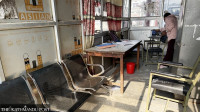National
Budget heavily relies on foreign funds for Covid-19 prevention
Government aims to get Rs 26.21 billion or 71.67 percent of the allocation for the Covid-19 Prevention and Control Programme from foreign donors.
Prithvi Man Shrestha
The government will rely heavily on external assistance to combat the Covid-19 pandemic with over 70 percent of the funds expected to be received from donors.
According to the Ministry of Finance, the government has allocated Rs36.57 billion for Covid-19 Prevention and Control Programme in the upcoming fiscal year. It is a substantial increase from over Rs6 billion allocated for the purpose in the current fiscal year. But the government expects to receive over two-thirds of the Covid-19 prevention funds for the new fiscal year from foreign donors.
According to the red book published by the Finance Ministry, Nepal aims to get Rs 26.21 billion or 71.67 percent of the allocation for the Covid-19 Prevention and Control Programme from foreign donors. The government has allocated just Rs10.36 billion from its resources.
According to the red book, the Asian Development Bank (ADB) is expected to contribute the biggest amount—Rs17 billion—to combat the pandemic. Similarly the International Development Association under the World Bank is expected to provide Rs 8 billion for the purpose under loan assistance.
Likewise, China, the Global Alliance for Vaccines and Immunization (GAVI), and the United Nations Children’s Fund are expected to contribute a total of Rs 1.16 billion in grants for the Covid-19 prevention programme.
“A majority of the foreign aid will be used in procuring Covid-19 vaccines,” said Sishir Kumar Dhugana, secretary at the Finance Ministry. In the budget speech, the government said Rs26.75 billion has been allocated for procuring Covid-19 vaccines. This amount also includes a portion of the Asian Development Bank loan for which the government has yet to sign an agreement.
Dhungana said they have secured a loan from the Asian Development Bank (ADB) although an agreement has yet to be signed. “The ADB has committed $165 million (Rs19.17 billion), so we included the amount in the budget,” he said. However, officials and experts said the amount should not have been included in the budget without signing a loan agreement.
On April 2, the government and the World Bank signed an agreement for a loan worth $75 million to support access to safe and effective Covid-19 vaccines for Nepal’s prioritised populations.
Former Finance Secretary Shanta Raj Subedi said there is a tradition of incorporating donor funds in the budget only if negotiations for such funds have reached the stage of signing agreements. “Such resources from donors are included only on rare occasions. Usually, only the resources that have been guaranteed by signing agreements are included in the budget,” he said.
As long as an agreement is not signed, that is not considered guaranteed resources technically.
In the health sector allocations, the government has long been relying on external resources. With the government’s revenue collection taking a big hit due to the pandemic, the government has relied more on external assistance. In the last two years, the government almost doubled the budget for the Health Ministry due to the pandemic.
According to the budget speech, the government has allocated Rs122.77 billion for the Health Ministry, which is a rise of 35 percent compared to the ongoing fiscal year. The allocation for the current fiscal year is Rs90.69 billion, which is a hike by Rs21.91 billion from the allocation for 2019-20.
“The government should increase domestic funding especially in basic health facilities because they have a crucial role in fighting Covid-19 and future pandemics,” said Former Finance Secretary Bidyadhar Mallik.
“Our health budget has now grown due to the pandemic, but the total health budget over the years has remained small compared to the GDP.”
According to the World Bank’s data, Nepal’s investment in the health sector in 2018 stood at 5.84 percent against the GDP.
Although the government has given priority to increasing the number of health facilities and announced programmes to set up health posts at the local level, their implementation on the ground has remained poor.




 18.12°C Kathmandu
18.12°C Kathmandu















